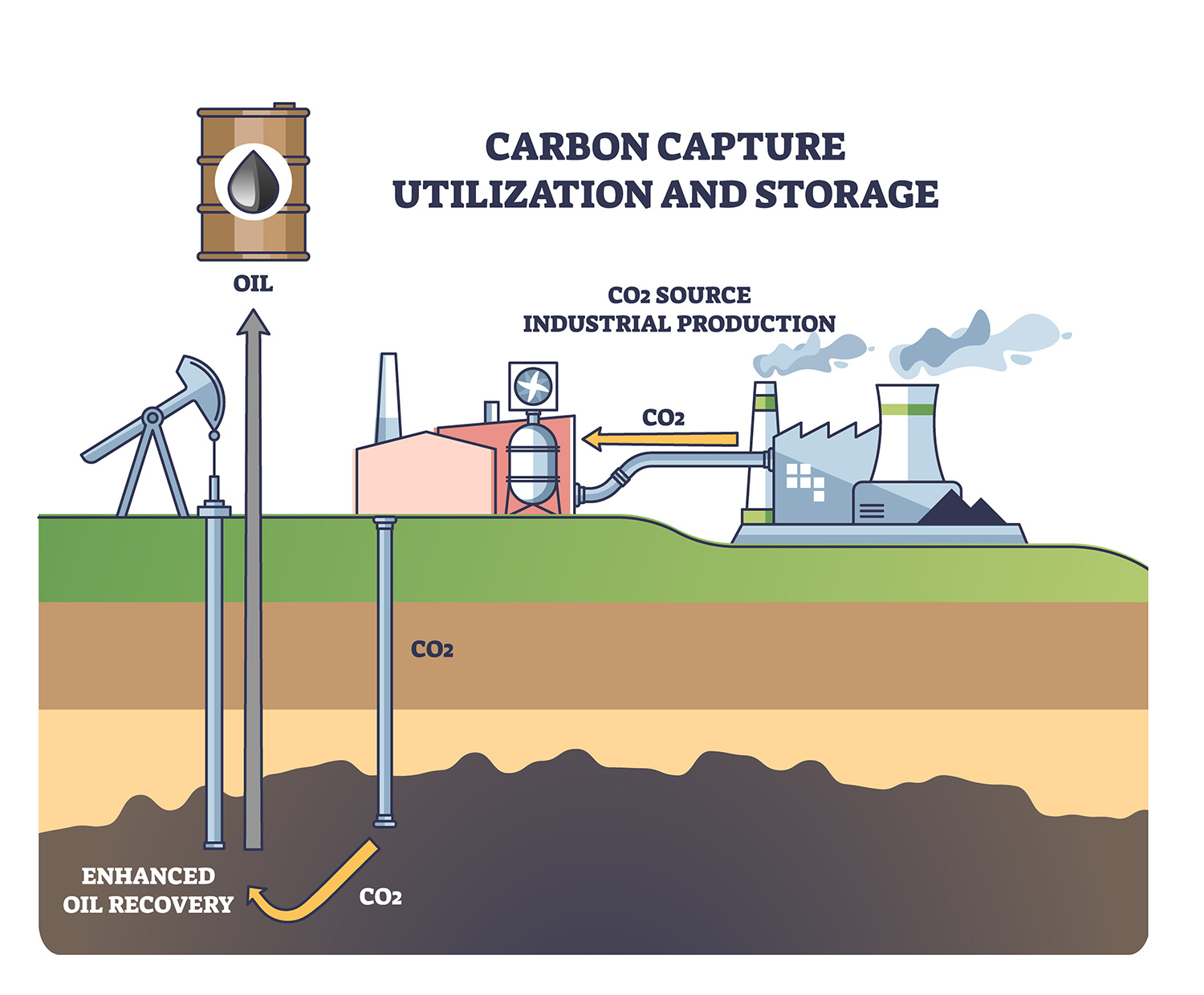Carbon Capture and Storage (CCS): Storing CO2 Underground
The process of underground CO2 capture, as intended in carbon storage initiatives, involves several steps aimed at securely storing carbon dioxide deep underground.
Here is a description of the theoretical process.
- Carbon Capture: The first step involves capturing carbon dioxide emissions from industrial sources, such as power plants or factories. This is typically achieved through various technologies, including amine absorption, oxy-fuel combustion, or membrane separation, which capture CO2 before it is released into the atmosphere.
- Compression: The captured CO2 is then compressed to increase its density, making it easier to transport and inject into underground storage sites.
- Transport: The compressed CO2 is transported via pipelines or other means to the designated storage site. Transportation may involve considerable distances depending on the location of the emission source and storage facility.
- Injection: At the storage site, the CO2 is injected deep underground into geologically suitable formations. These formations can include depleted oil and gas reservoirs, saline aquifers, or unmineable coal seams. The injected CO2 displaces fluids present in the formation, occupying pore spaces and remaining trapped within the geological structure.
- Monitoring and Verification: Monitoring techniques, such as seismic surveys, well logging, and groundwater monitoring, are employed to ensure the integrity of the storage site. Continuous monitoring and verification are necessary to detect any potential leakage or movement of the stored CO2.
Requirements for Successful Carbon Storage:
For underground CO2 storage to be effective and safe, several requirements must be met:
- Suitable Geological Formations: The storage site must possess suitable geological formations with adequate capacity and structural integrity to securely retain the injected CO2 over long periods. The formations should have impermeable caprocks to prevent CO2 leakage.
- Site Characterization: Thorough site characterization is essential to understand the geology, hydrology, and geochemistry of the storage site. This helps assess its suitability for carbon storage and provides crucial information for monitoring and risk assessment.
- Long-Term Stability: The storage site should exhibit long-term stability to ensure the stored CO2 remains isolated and does not pose any environmental or safety risks. Detailed modeling and risk assessments are conducted to evaluate the potential for leakage or other adverse impacts.
Comparison to Current Practices:
Unfortunately, the reality of carbon storage initiatives has deviated from the intended purpose. A significant number of large-scale carbon storage facilities in the United States utilize the captured CO2 for enhanced oil recovery (EOR) projects. In this process, the injected CO2 helps extract additional oil from depleted wells by reducing the viscosity of the remaining oil reserves.
This approach, while economically beneficial for the oil and gas industry, diverts the purpose of carbon storage away from long-term climate change mitigation. Instead of permanently storing the captured CO2 underground, it is used to extract more fossil fuels, thereby perpetuating the reliance on oil and gas and resulting in additional emissions from the extracted oil.
This practice raises concerns about the environmental integrity and effectiveness of carbon storage initiatives. It highlights the misalignment between the original intention of storing CO2 underground and the current utilization of captured carbon dioxide for short-term economic gains through increased oil production.
The theoretical process of underground CO2 capture involves capturing, compressing, transporting, and injecting carbon dioxide deep underground into suitable geological formations. However, the reality has seen a significant focus on utilizing captured CO2 for enhanced oil recovery, deviating from the intended purpose of carbon storage for climate change mitigation.
